Campaigners and politicians have been clamouring for ‘Norwich in 90’ to form a key part of the next East Anglia franchise that is due to begin in October 2016.
However, while Secretary of State for Transport Patrick McLoughlin spoke of the need for this last year, as well as when launching the East Anglia franchise prospectus on February 19 (RAIL 769), the document stops short of it being confirmed.
It does state that currently the fastest journey is the 1700 London Liverpool Street-Norwich, which completes the 115-mile journey in 102 minutes with two intermediate stops. Currently the average journey time for fast trains is 110 minutes, with the semi-fast trains completing the same journey (with seven intermediate stops) in 117 minutes.
“East Anglia has a thriving economy and I want it to be served by the best train services possible,” said McLoughlin at the launch of the prospectus.
“Giving the region train services fit for the 21st century is vital to connecting people with jobs and businesses with customers. Good transport is central to our long-term economic plan.”
However, the next franchise will cover a lot more than simply speeding up trains between Norwich and London.
The rolling stock used on the Great Eastern Main Line expresses between the two cities - Class 90s and Mk 3s - are capable of faster speeds (the maximum on the route is 100mph, but they can run at 110mph if needed). However, campaigners say there is also a need to replace them with brand new inter-city stock.
The prospectus says: “The trains are designed to operate at 110mph but infrastructure on the route does not allow running over 100mph. The fixed formation and the characteristics of the train make it unsuitable to the high-density commuter operation that the rolling stock is currently used for in the peak but, conversely, they often operate with spare capacity in the off-peak.”
In the foreword to the prospectus, Rail Minister Claire Perry wrote: “As well as being a premier travel choice for commuters into East London, the new East Anglia franchise will feature inter-city, suburban and regional services, and serves airports, ports and one of the UK’s premier centres of technology. We want an operator for this franchise that will take on this exciting challenge and provide the rail services that will allow these markets to thrive.”
It is anticipated that the EA deal will start on October 17 2016, and last between eight and 11 years, with a one-year extension option.
The deadline for tenders to be submitted, or for requests to participate, is April 15, after which the Invitation To Tender (ITT) will be issued on August 31 2015. The deadline for ITT submissions is December 2015, and the winner is likely to be announced in June 2016.
The current Greater Anglia franchise is operated by Abellio, which was awarded a 29-month contract that began on February 5 2012. It then negotiated a two-year Direct Award that began on July 20 2014 and finishes on October 16 2016. That replaced what should have been a longer-term deal, which was cancelled after the DfT implemented its franchising review following the InterCity West Coast franchise debacle.
The main market for the franchise has tended to be dominated by commuter travel to and from London, particularly the City and Docklands. There is also leisure travel to Stansted Airport, the Westfield shopping centre at Stratford, and the coastal resorts of Sheringham, Cromer, Great Yarmouth, Lowestoft, Felixstowe, Walton-on-the-Naze, Clacton-on-Sea and Southend-on-Sea.
The prospectus highlights the growing business markets in Cambridge, Ipswich and Norwich, while Stansted and Southend airports and Harwich International (with its ferry connections) serve international markets.
It also delves into the markets for individual routes that will be served by the new franchise. It reveals that over the seven years to 2013, total inter-city revenue growth averaged 4.6%, which is significantly below the average UK IC sector figure of 5.3%. Yet Greater Anglia inter-city services provide the highest yield per passenger of any East Anglia service group, with an average fare of £12. The market is responsible for 23% of EA franchise revenue, after devolution of Metro trains to Crossrail and West Anglia Inners to London Overground.
Ticket types on the route show that Norwich to London has more than 1,200 journeys per average weekday, of which the largest portion is off-peak trips. The station with the largest portion of season ticket travel to London is Colchester (more than 600 per day).
The Great Eastern market operates within the southern and eastern region of the EA franchise. Destinations include Southend, Southminster, Clacton-on-Sea, Ipswich, Clacton, Colchester, Braintree (via Witham), Harwich and Walton-on-the-Naze (via Thorpe-le-Soken) to London Liverpool Street and Sudbury (the latter operates via a connection at Marks Tey).
Here again, revenue growth has not been great - it averaged 4.6% over the seven years to 2013, below the average London and South East revenue growth of 7.4% over the same period.
By far the most popular journey is Chelmsford to London, both for overall journeys per day and for season tickets. Most destinations have one train per hour, although Southminster has two, Clacton three and Southend six. Chelmsford has two, but that is a through station while the others are termini.
The West Anglia market covers London to Hertford, Cambridge and Kings Lynn, but not Stansted Airport. This offers an alternative to Govia Thameslink Railway, although at an average journey time of 85 minutes it is much slower than the GTR journey time average of 54 minutes between Cambridge and London.
More than half of those travelling on the WA route are season ticket holders commuting into London. Cheshunt-London is the biggest flow, followed by Broxbourne-London.
Stansted Express is ‘separate’ from the rest of the East Anglia service provision, with its own dedicated fleet, brand, website, on board catering provision and marketing. However, unlike services such as Heathrow Express, it is not a direct fast airport service.
Trains run four times an hour, with a typical journey from London Liverpool Street to Stansted Airport taking between 45 and 49 minutes, depending on the stopping pattern. All trains stop at Tottenham Hale for connections onto the Victoria Line, with an additional stop at either Harlow Town or Bishops Stortford and one train per hour stopping at Stansted Mountfitchet.
On weekday peaks, further additional calls are made at Sawbridgeworth, Enfield Lock, Waltham Cross and Brimsdown (maximum six calls per train), to accommodate London commuting demand. This extends the journey time up to 57 minutes and results in many of the peak-time Stansted Express services being crowded with commuters rather than airport users.
It is the second highest yielding service group on the EA franchise, with an average fare of £11 excluding the other WA services. But its greatest competition is roads - a Peak Return ticket is £38.40 for a 45-minute train journey, compared with a £15 Peak Return by coach from Victoria using Terravision, which takes 75 minutes.
This competition has been mirrored in the decline of the rail market share to the airport. The coach market share has risen from 21% to 29%, while rail has dropped to 22%. Overall, 49% of airport users arrived by car.
The EA franchise is also required to provide a significant regional service. The top two journeys are Cambridge to Ely and Great Yarmouth to Norwich.
Regional services with the lowest demand also have some of the lowest ticket yields on the EA route, at less than £3. It is also highlighted that many of these regional services cross the Felixstowe-Nuneaton freight corridor, which represents a challenge for timetable planning and line regulation.
There are also seven stations served by a skeleton service pattern on the regional services. These are: Berney Arms (three trains per day with four on Sundays); Spooner Row (three trains per day); Eccles Road and Harling Road (two trains per day); Shippea Hill (one train per day); and Buckenham and Lakenheath (Saturday and Sunday only).
Importantly, from May 31 2015 the current Abellio Greater Anglia franchise loses part of its existing operations. Twelve stations will transfer to Crossrail when it takes over the Metro services between Liverpool Street and Shenfield. Forty-four Class 315 electric multiple units, 122 station staff, 92 drivers and four cleaners also move to Crossrail from that date.
On the same day, Transport for London takes over West Anglia Inner services, which will move to London Overground. This involves 24 stations, 17 Class 315s, eight ‘317/7s’ and seven ‘317/8s’ moving to LO. The numbers of staff transferring were not known at the date of publication, but will be made available once pre-qualified bidders are announced.
Currently AGA employs 3,008 staff and operates some 1,900 trains on weekdays, 1,600 on Saturdays and 800 on Sundays. There are 354,000 journeys made per day and 135.2 million per year. AGA currently has 176 stations.
Current Public Performance Measure (PPM) for the AGA franchise is 90.6%, according to figures dated to March 31 2015. This is below a peak of more than 92.5% two years ago.
The IC trains currently deliver 83.7% PPM. According to the prospectus, areas that are cause for concern include infrastructure failures (particularly track faults arising from issues with the renewals programme that is under way), increases in the number of fatalities on the route, increases in delays per incident and the ability of the service to recover after incidents, and the fact that early improvements made to fleet reliability in the AGA franchise have stalled.
The document states: “The introduction of other operators to the area will require good co-operation between all parties, particularly in times of disruption. A review of fleet management will be required, as these two additional operators will share maintenance facilities.
“There is much two-track railway with limited passing facilities, which has particular relevance in the context of an intensive service during peak hours.
“Although the reliability of the fleet is generally reasonable, the traction characteristics are basic and do not deliver modern acceleration or deceleration capability.”
The document goes on to draw attention to “anticipated committed infrastructure schemes that are directly linked to improving both speeds and performance”. These are listed as:
- Electrification of Barking-Gospel Oak will enable more efficient operation of the passenger railway, by avoiding the present arrangements whereby freight services emanating from North Thameside cross the Great Eastern Main Line at grade at Forest Gate to access the North London Line via Stratford.
A new 70mph crossover will be located from the main line to the electric lines west of Bow Junction, following the removal of Crossrail services into Liverpool Street high level station, thus allowing more efficient access to the higher numbered platforms at Liverpool Street.
- The single leads at Ely North Junction will be replaced by the ability to deliver multiple train moves simultaneously, thus removing the present constraint to increasing passenger services in the area.
- Line speed improvements on the Great Eastern Main Line are planned to permit 110mph operation. This will be achieved through renewals and removal of some level crossings, and through additional capacity provided from Coppermill Junction northwards towards Broxbourne.
Regarding ticketing, the prospectus states: “Rail Executive is likely to require bidders to put forward proposals for the improved retailing of products and services, from ticket search and acquisition to on-board and at-station services. Tickets should be easily accessible on the widest variety of media (smartphone, tablets, print-at-home), and their pricing, availability and time of use transparent in order to facilitate seamless travel across boundaries with other transport authorities.”
Whoever wins the EA franchise has tough conditions to meet - a demanding public and campaigners determined to see the transformation of a route that has traditionally been handed unwanted cast-offs from other regions. That transformation could be hard, but the rewards are certainly there if it is handled correctly.
- This feature was published in RAIL 770 on March 18 2015

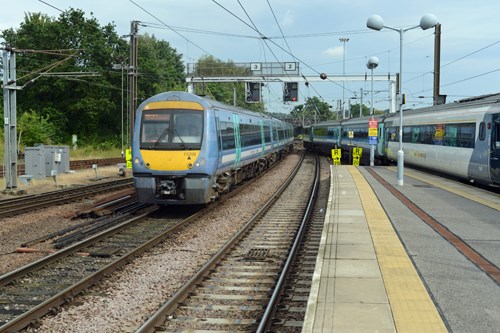
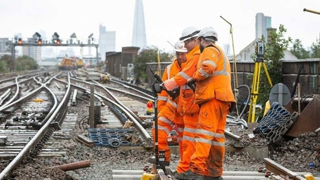
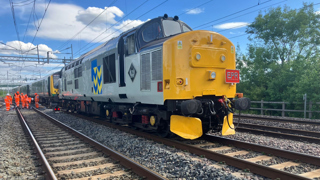
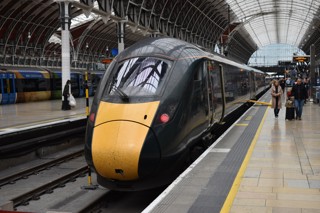
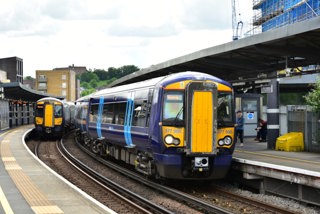
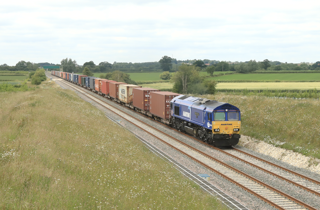










Login to comment
Comments
No comments have been made yet.